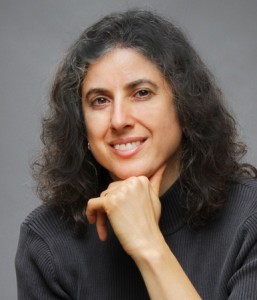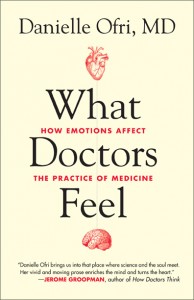If you are wondering what it feels like to train and practice as a physician, Dr. Danielle Ofri‘s What Doctors Feel (2014) offers a welcome study break from premedical work. Dr. Ofri, who practices at Bellevue Hospital in NYC, is co-founder and editor-in-chief of the Bellevue Literary Revue and hold MD and PhD degrees from NYU. Her website is full of “medical media” addressing some of the most poignant and important issues in medicine.  Reading is a great way to remain connected with your emotional and reflective side when problem sets and exams are pressing upon you.
Reading is a great way to remain connected with your emotional and reflective side when problem sets and exams are pressing upon you.
A starred review from Booklist: Tucked inside a white lab coat or scrub suit is a welter of human emotions that can play a large role in a doctor’s decision-making process. Ofri, an internist at New York’s Bellevue Hospital, explores the emotional core of doctoring. Suturing together her own experiences, the plights of memorable patients, and interviews with other physicians, she examines the diverse feelings—anger, grief, shame, disillusionment, gratitude, humility, joy—that can fluster or elevate physicians. “Fear is a primal emotion in medicine,” she writes, and doctors worry about making a mistake or even killing a patient. Sadness is an occupational hazard, and “A thread of sorrow weaves through the daily life of medicine.” Then there’s empathy. Is it innate, acquired, or both, and why do third-year medical students lose it? Ofri exposes her emotional side as she recounts the story of a longtime patient, an undocumented immigrant from Guatemala who finally receives a heart transplant but dies shortly after the procedure. Ofri admits, “Doctors who are angry, nervous, jealous, burned out, terrified, or ashamed can usually still treat bronchitis or ankle sprains competently.” Yet her insightful and invigorating book makes the case that it’s better for patients if a physician’s emotional compass-needle points in a positive direction. –Tony Miksanek
examines the diverse feelings—anger, grief, shame, disillusionment, gratitude, humility, joy—that can fluster or elevate physicians. “Fear is a primal emotion in medicine,” she writes, and doctors worry about making a mistake or even killing a patient. Sadness is an occupational hazard, and “A thread of sorrow weaves through the daily life of medicine.” Then there’s empathy. Is it innate, acquired, or both, and why do third-year medical students lose it? Ofri exposes her emotional side as she recounts the story of a longtime patient, an undocumented immigrant from Guatemala who finally receives a heart transplant but dies shortly after the procedure. Ofri admits, “Doctors who are angry, nervous, jealous, burned out, terrified, or ashamed can usually still treat bronchitis or ankle sprains competently.” Yet her insightful and invigorating book makes the case that it’s better for patients if a physician’s emotional compass-needle points in a positive direction. –Tony Miksanek



 At a school with so many premedical students, it can seem that everyone is the same — taking the required courses, volunteering, conducting research and planning to move forward into a medical career. Frequently, future applicants will lament that there is nothing about their application that will “stand out” and grab the attention of admissions staff during the application process. From the point of view of your pre-health advisors, however, the applications to medical school from Penn students and alumni reflect a great diversity of interests and talents. Instead of asking, “How can I stand out?” the question might be reconsidered as “How can I stand up?” Instead of thinking about how you can distinguish yourself amongst peers, consider how you can best spend your time to satisfy your intellectual curiosity, serve others, engage with your community or challenge yourself. An application that “stands out” frequently is submitted by a person who didn’t spend a great deal of time calculating how to make that happen and stood up for their interests with passion and commitment. Have faith that if you are a good fit for medicine, have explored the field, and have developed yourself personally and professionally according to your inclinations, you will be noticed.
At a school with so many premedical students, it can seem that everyone is the same — taking the required courses, volunteering, conducting research and planning to move forward into a medical career. Frequently, future applicants will lament that there is nothing about their application that will “stand out” and grab the attention of admissions staff during the application process. From the point of view of your pre-health advisors, however, the applications to medical school from Penn students and alumni reflect a great diversity of interests and talents. Instead of asking, “How can I stand out?” the question might be reconsidered as “How can I stand up?” Instead of thinking about how you can distinguish yourself amongst peers, consider how you can best spend your time to satisfy your intellectual curiosity, serve others, engage with your community or challenge yourself. An application that “stands out” frequently is submitted by a person who didn’t spend a great deal of time calculating how to make that happen and stood up for their interests with passion and commitment. Have faith that if you are a good fit for medicine, have explored the field, and have developed yourself personally and professionally according to your inclinations, you will be noticed.